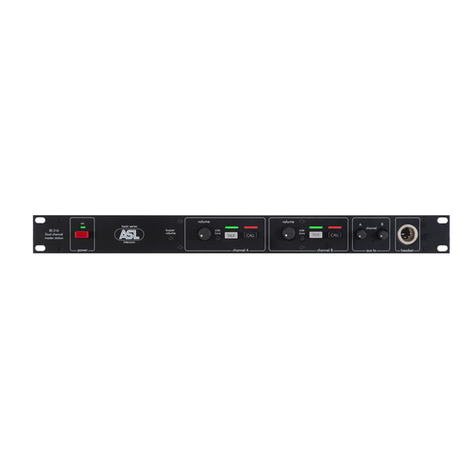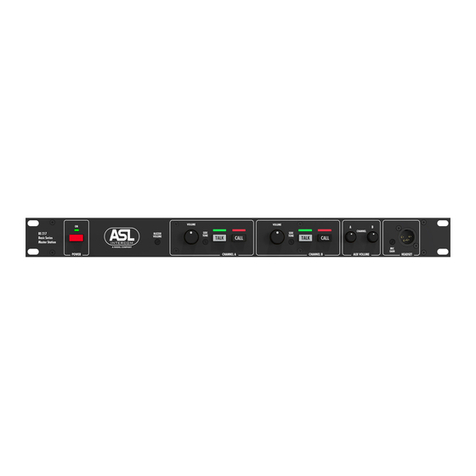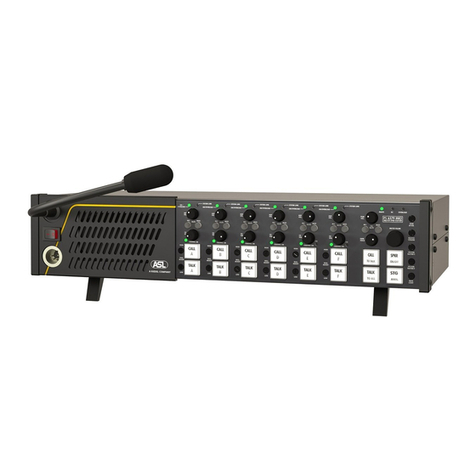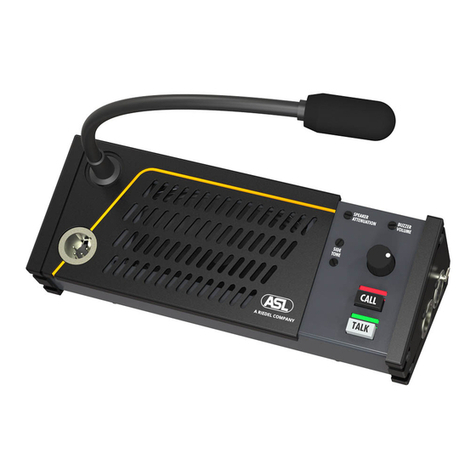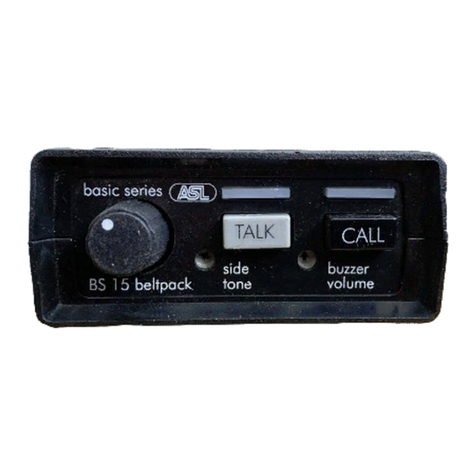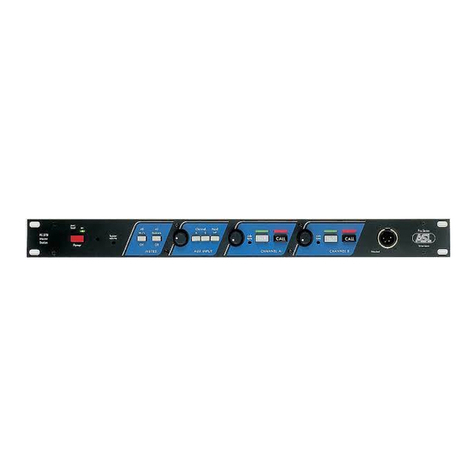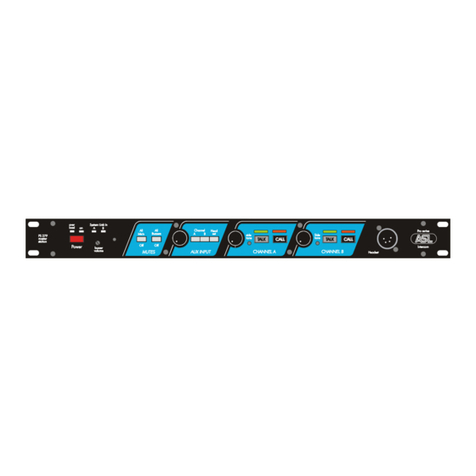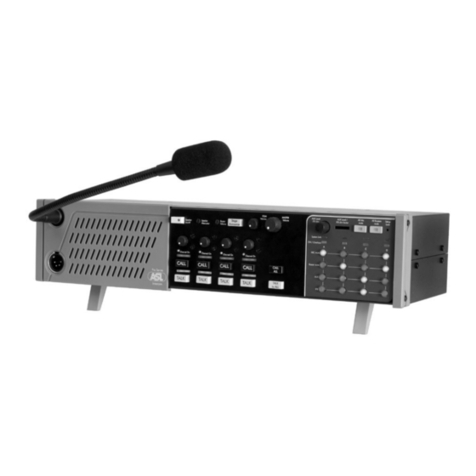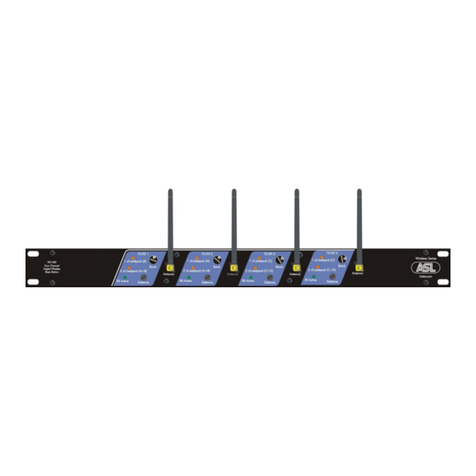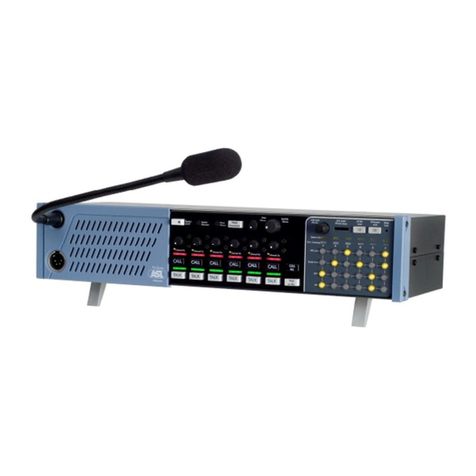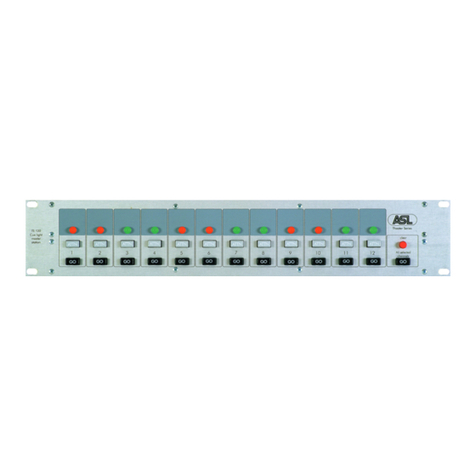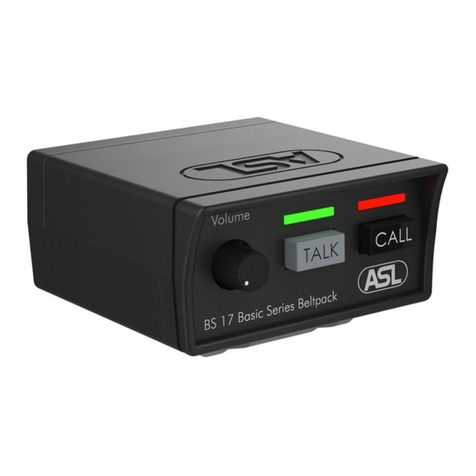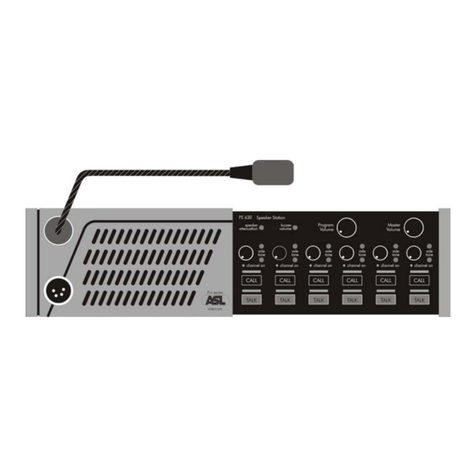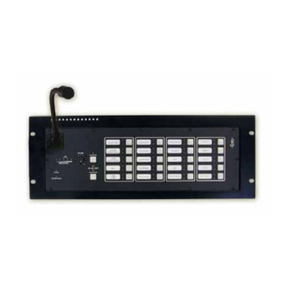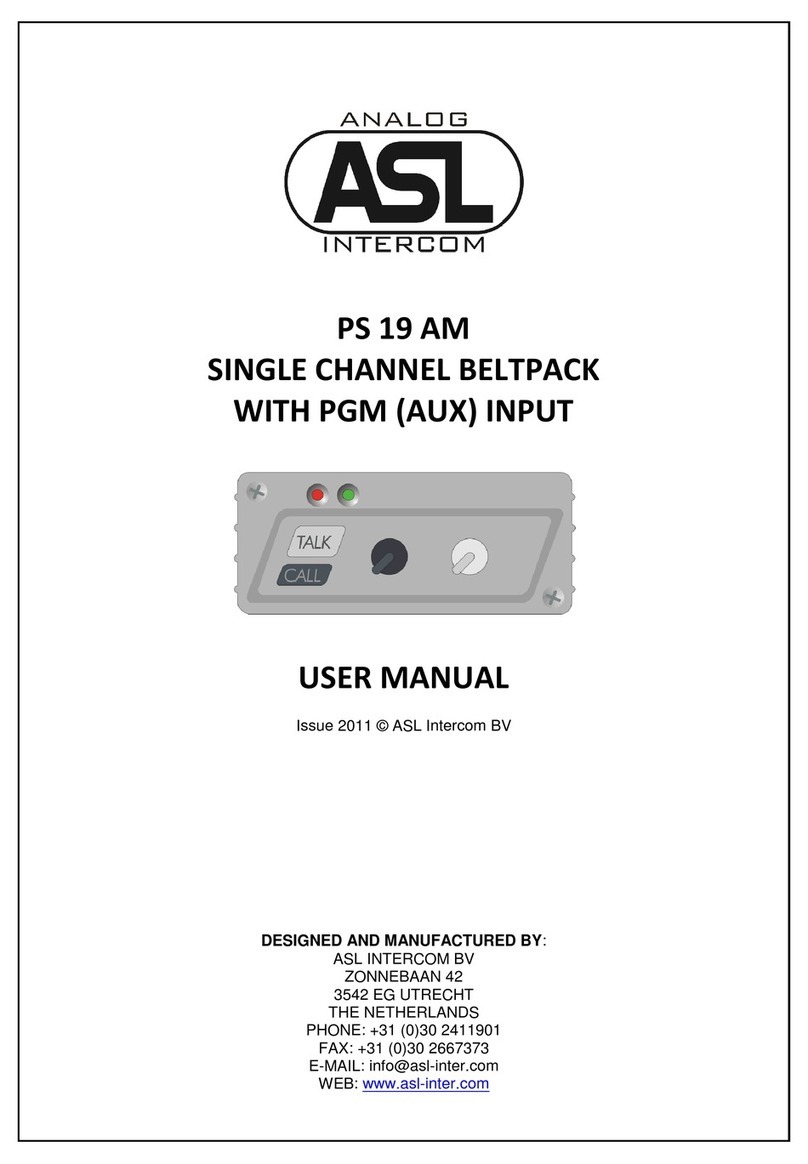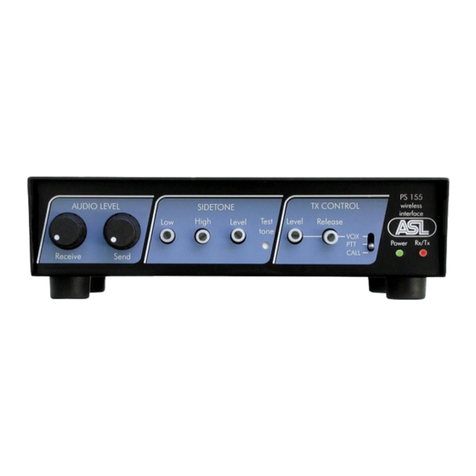
User Manual PS 19M / Issue 1 © 1999 ASL Intercom, Utrecht, Holland.
6
7.0 CABLING
For the PRO Series Intercom system the
interconnecting cables are of the shielded two-
conductor microphone cable type and the intercom
line connectors are of the XLR-3 type. Audio and Call
signals are on XLR pin 3, DC power is on XLR pin 2.
XLR pin 1 is connected to the shield of the cable which
functions as the common return for audio and power.
Since the audio signal is transferred in an unbalanced
þway, certain rules have to be obeyed when installing
the cables of an intercom network. This is to avoid
earth loops and to minimize power loss and the
possible effect of electromagnetic fields.
These rules are:
þUse high quality (multipair) cable. þKeep cables parallel as much as possible.
For interconnecting user stations, power supplies When two (multi channel) units in a network are
and accessories in an ASL Intercom network, use connected by more than one cable, make sure that
high quality shielded two-conductor (minimum 2x these cables are parallel to each other over the
0.30 mm2) microphone cable only. whole distance between those units. When using
In case of a multi channel intercom network, use multipair cable, parallelism is ensured in the best
high quality microphone 'multipair' cable only, each possible way.
pair consisting of two conductors (minimum 2x
0.15 mm2) with separate shield. Multipair cable þAvoid closed loops.
should also have an overall shield. Always avoid that cables are making a loop. So-
þUse flexible cables. cabled as a ring. All cable routes should have a
Use flexible single and multipair microphone cable 'star' configuration, with the central earthing point
instead of cable with solid cores, especially when (usually close to the power supply position) as the
the cable is subjected to bending during operation center of the star.
or installation.
þSeparate cable screen to XLR pin 1. Keep intercom cables away from high energy
The screen of each separate microphone cable cables, e.g. 110/220/380V mains power or dimmer
and/or the screen of each single pair in a multipair controlled feeds for spotlights.
cable, should be connected to pin 1 of each XLR-3 Intercom cables should cross high energy cables
connector. Do not connect this cable screen to the at an angle of 90þ only.
metal housing of the connector or to metal wall Intercom cables should never be in the same
boxes (outlets). trunking as energy cables.
See page 10: Earthing Concept.
þCable trunks, connection boxes and overall In order to avoid unacceptable power losses, place
multipair cable screen to clean earth. the power supply as close as possible to where
Metal cable trunks, metal connection boxes and most power consumption occurs or, in other
overall multipair cable screen should be inter- words, most user stations are placed.
connected and, at one point (the 'central earthing
point') in the intercom network only, be connected þConnect ASL power supply to a 'clean' mains
to a clean earth or a safety earth. outlet.
See page 10: Earthing Concept. The ASL power supply may be connected to the
þKeep metal connection boxes and cable housings is connected. Avoid using mains outlets which also
isolated from other metal parts. power dimmer controlled lighting systems.
Metal housings for intercom cables and connectors
should be mounted in such a way that they are In case of more complex installations, don't
isolated from other metal cable and connector hesitate to contact us. Please send us a block
housings and from any other metal construction diagram of the planned network with a list of all
parts. user stations and their positions, and we are happy
þSee Party Line, Technical Concept
called 'ring intercom' should not physically be
þKeep cables away from electromagnetic sources.
þPlace power supply in a central position.
mains power outlet to which other audio equipment
to advise you on cabling lay out.


